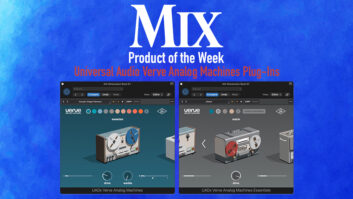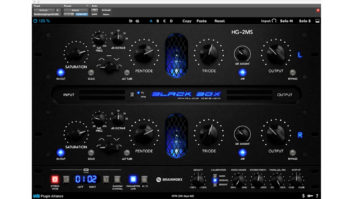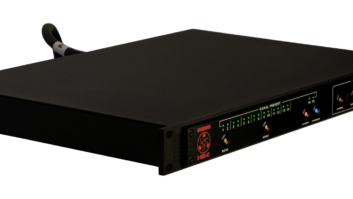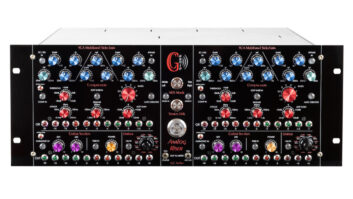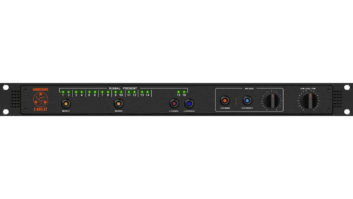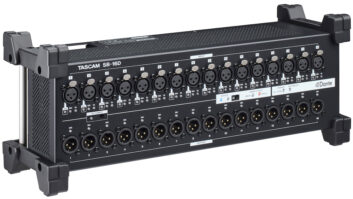

Which is better? Mixing inside or outside the box? If you haven’t had this discussion, then either you have your head in the mix, don’t get out much or don’t read this magazine. The proliferation of analog summing mixers designed to facilitate DAW mixing “outside of the box” indicates that this is a growing trend in the audio community. Nautilus Master Technology’s Commander is a new entrant into the analog summing mixer field.
The design and ergonomics of Nautilus equipment is specified by mastering engineer John Vestman and implemented by Steve Firlotte of Inward Connections. The Commander uses a Class-A SPA 690 discrete op amp block. All switching is accomplished by relays, and there are no surface-mount components. It boasts a frequency response of 10 to 100k Hz, +0/-1.5 dB with 0.02-percent THD. Channel crosstalk is rated at -90 dB @ 1k. This is a clean machine.
SOLID, STRIKING DESIGN
The Commander uses multicolored buttons and analog VU meters and knobs that create a retro feel with a modern design. It has 12 inputs that can be summed to stereo. The first eight inputs are balanced and have pan pots and mutes on the front panel. The pan pots are very smooth and the mutes, like all of the pushbuttons on this unit, are relay-based. There are also two stereo pairs of unbalanced auxiliary inputs that don’t have mutes or pans.
The source B stereo input has variable gain that is controlled by a front panel trim pot. The Commander has two analog meters that are set to display a “zero” level of +4 dBm. A meter trim knob, directly below the meters, allows trimming the meters from -4 to +4 in 2dB steps.
There are two insert buttons on the front. The left button puts a stereo insert on the mix bus, while the right allows you to put the insert on the source B input. The Commander also has a large master level control that does not add any gain, but does allow you to do effortless, smooth fades.
The back of the Commander is populated with 14 XLR Neutrik gold-plated input combo jacks, eight transformer-balanced normal inputs, four unbalanced auxiliary inputs and two balanced jacks for the source B input. There are two sets of stereo bus outputs, also on gold-plated XLR connectors. There is an AC ground lift and a virtual dynamics AC cable ($360, included in the unit’s price).
IN THE STUDIO
The Commander is a simple and intuitive box to use and offers features that other summing boxes don’t, such as a level-adjustable source B input, adjustable meter sensitivity, a stereo insert assignable to the summing path or the source B input and a continuous master fader. The source B allows instant level-matched comparisons of your mix to another source — ideal for referencing your mixes. You can adjust the meters to bring them into a useful range — a feature that mastering engineers have had for years. It comes in handy when you want to level-match to some of today’s blisteringly hot CDs. The insert on the Commander is useful for processing your mix through outboard gear, as it allows you to instantly check if you are actually improving your mix by adding your insert chain.
The Commander allows engineers to do stem mixes and sum them to stereo outside the box. Once back in the analog world, mixers can revisit their analog outboard processors, either inserted in-between the DAW and the Commander or on the 2-channel mix insert of the Commander (or both). I used the Commander to mix an album that was recorded with very sparse instrumentation. I sent drums and percussion to 1+2, piano to 3+4, bass to 5, vocal to 6 and all other instruments to 7+8. I used the two extra external stereo inputs as reverb returns (the first from all of the internal effects and the second as a return only for the vocal reverb). I had lots of tube gear patched in with EQ and compression on the mix insert. I printed to an Alesis Masterlink at 96/24. This combination of equipment gave me a deep low end and a pleasant high end, with a depth, width and clarity that surpassed what I was used to hearing. Once I heard this sound, there was no way I was going to send this box back.
BUT WAIT, THERE’S MORE
Not just for mixing, the Commander is also designed for the mastering environment in which clients deliver subgroups derived from their mixes as stems. This Stereo Master Separation format enables a much greater level of flexibility and control during the mastering process, allowing processing to be applied to select stems without affecting the entire mix. In addition, mastering engineers can check to make sure they are retaining the artist’s original vision by referencing their 2-channel mix (in the source B input) with the Master Separations (in the summing path).
SO HOW’S YOUR SUMMER?
The Commander is aimed at the high-end user and it certainly does deliver features for the dollar: solid construction, intuitive interface and excellent fit and finish. The unit works nicely as a summing box for DAW use and as a mastering tool. There are a lot of great options now in the summing box wars, and the Nautilus Commander is certainly a contender. Anyone looking for this type of signal path upgrade should take a look at the Commander. Price: $3,995.
Nautilus Master Technology, 714/894-4000, www.nautiluspro.com.
Erik Zobler is an L.A.-based mixer. He can be reached at
[email protected].

For more on the Commanders’ functions and features, click here.
Click here to see how Commander connects as a DAW Discrete Class-A summing buss.
Click here to see how it connects in a COMMANDER – DMC-8 – DMC-2 configuration.

